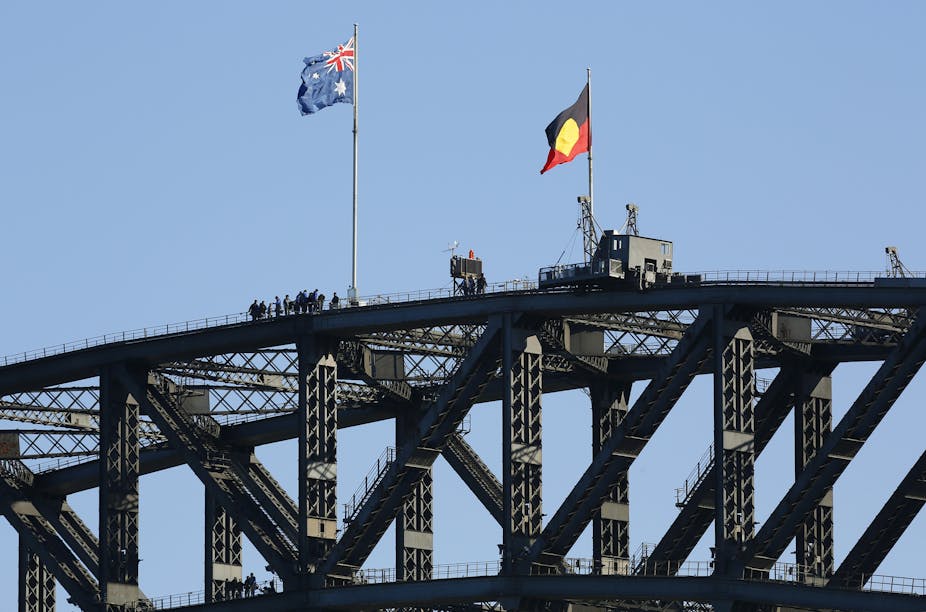The bipartisan push to recognise Aboriginal and Torres Strait Islanders in Australia’s Constitution is in line with recent international practice. However, the Australian proposals will likely be much less substantive than those of many other countries.
Most specific proposals, such as those of the Expert Panel on Constitutional Recognition of Indigenous Australians, avoid any language of indigenous “rights”. But it is almost inevitable that symbolic recognition will have political and economic consequences.
The consequences of indigenous constitutional recognition have varied widely between countries that have made such changes. But where these consequences have been negative, largely it has been because the political system has been captured – by indigenous groups themselves (as in Malaysia) or by non-indigenous people seeking to entrench their privilege (as in Guatemala).
International perspectives
The International Labor Organisation (ILO) Convention 169 calls on countries to recognise the cultural and economic specificities of indigenous groups and to undertake special measures in response to vulnerable and marginalised groups. While only 22 countries have ratified this, many more constitutions around the world recognise a special status for indigenous groups to differing extents and with differing implications.
Canada, like Australia, is predominantly populated by descendants of European settlers. But since 1982, Canada’s Constitution contains a clause that “recognises and affirms” the rights of aboriginal groups. This recognition was one of the reasons Canada withdrew from the International Whaling Convention. Canada does not allow commercial whaling, but a moratorium on all whaling would have conflicted with its commitment to aboriginal livelihoods.
In Latin America, a wave of constitutional reform since the 1980s has seen many countries include indigenous recognition in their constitutions. In many cases, these changes came on the back of extensive violent conflict in which indigenous groups were severely victimised.
In Guatemala, the end of a vicious civil war in 1994 was accompanied by constitutional reform. This included recognition of indigenous land and customs.
But “New World” countries do not “own” such measures. Malaysia’s Constitution recognises the “special position” of the Malays and other indigenous groups. It empowers the government – through the constitutional monarch – to take affirmative action measures to safeguard this.
In Malaysia, many critics see this “recognition” as having evolved into little more than a constitutional figleaf for racist and corrupt government policies. Since the 1970s, a beefed-up Sedition Act has made even questioning these rights an imprisonable offence.
A tragic irony of the Malaysian case is that the groups that have the strongest claims to being the “aborigines” of Malaysia – the small, highland Orang Asli (literally “original people”) communities – have not benefited significantly from these policies. They remain severely marginalised, economically and politically.
The Malaysian experience differs significantly from the New World cases. The beneficiary groups – together termed the bumiputera (sons of the soil) – constitute a demographic majority and are politically dominant, particularly the ethnic Malays.
But where beneficiary groups make up a small proportion of the population, constitutional recognition may have a very limited impact. Those groups often lack the political weight to leverage constitutional change into greater social change.
This is the case in Guatemala. Despite the extensive nature of the constitutional reforms, social and political progress for indigenous groups has been limited. Instead, the political system reverted to the Latino-dominated elites that had controlled Guatemala during the long civil war.
Recognition versus redistribution
Many political theorists like to distinguish between cultural “recognition” and socioeconomic “redistribution” as different aims. But as philosopher Nancy Fraser points out, it is wrong to treat these as mutually exclusive goals.
There is a complex relationship between recognition and redistribution. They cannot be separated.
Nowhere is this more evident than in constitutional recognition of indigenous status. The examples cited above appear to be much more substantive in their wording and impact than the kinds of changes to Australia’s Constitution that are being suggested.
But reflecting indigenous groups in a constitution in anything other than a shallow, formulaic way is to recognise their social and cultural traditions. This carries political and potentially redistributive consequences. In Canada, the recognition of aboriginal rights was the constitutional foundation for the eventual creation of a separate Nunavut province with extensive self-government in 1999.
Opponents of symbolic recognition in constitutions – whether in Australia or elsewhere – hence sometimes see it as the thin edge of the wedge. One argument is that the Australian Constitution has worked so well precisely because its basic function is procedural, rather than “national” or identity-based.
Yet this argument provokes the rejoinder: the constitution has worked well for whom? Equality before the law in itself is often of little benefit to groups seeking to rectify decades of active marginalisation in all other areas of cultural, economic and political life. This is because they lack the economic and political resources to translate legal equality into socioeconomic equality.
Constitutional recognition is certainly the thin edge of a wedge, but it is not one Australians should be afraid of. Rather, it should form the basis for a renewed conversation about how Australia can – to paraphrase the Expert Panel – recognise, respect and secure the advancement of Aboriginals and Torres Strait Islanders.

